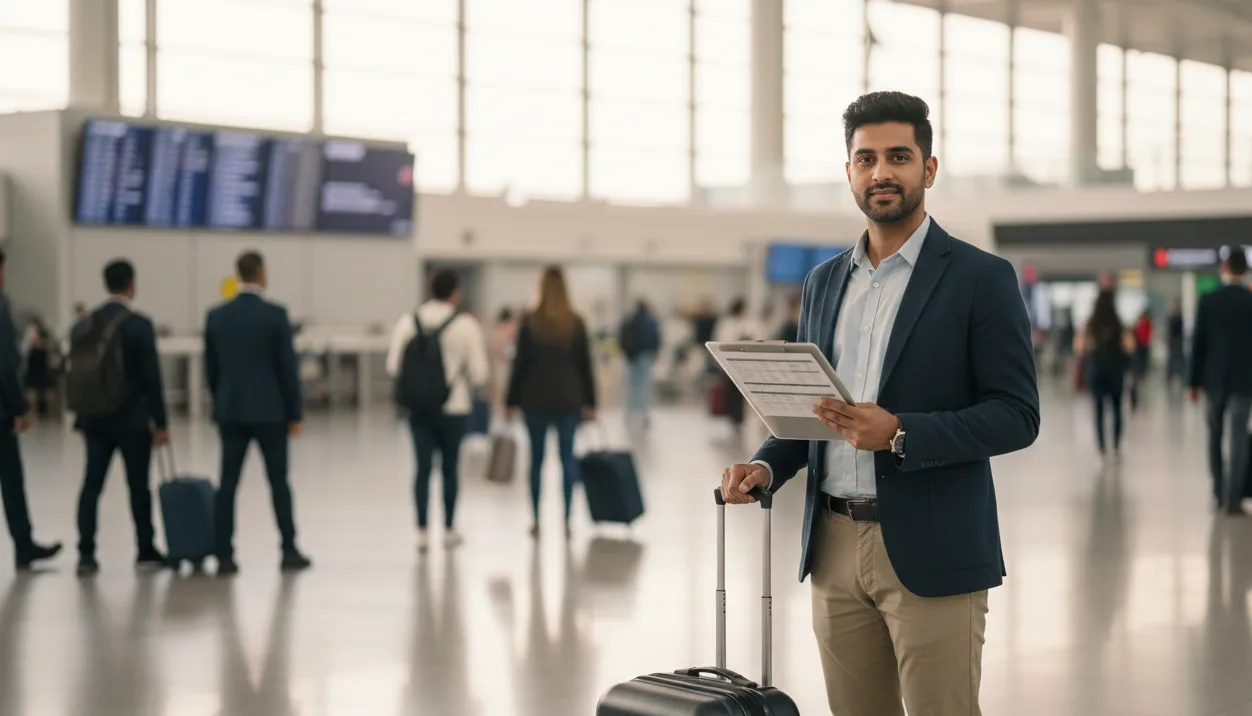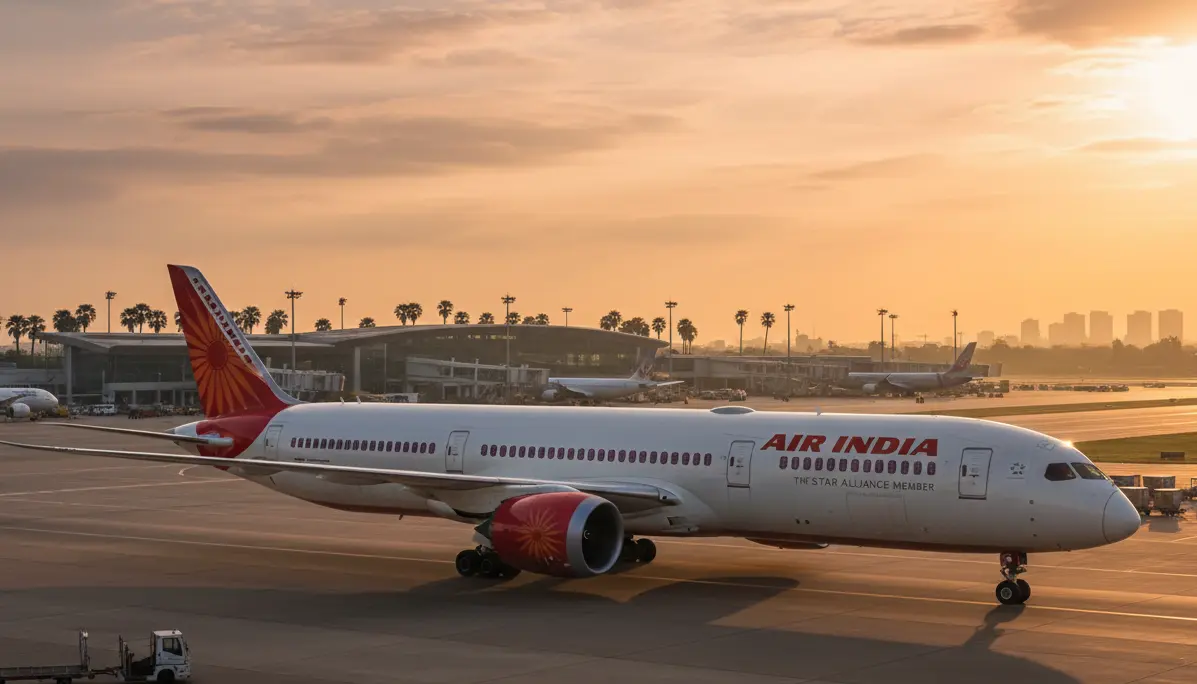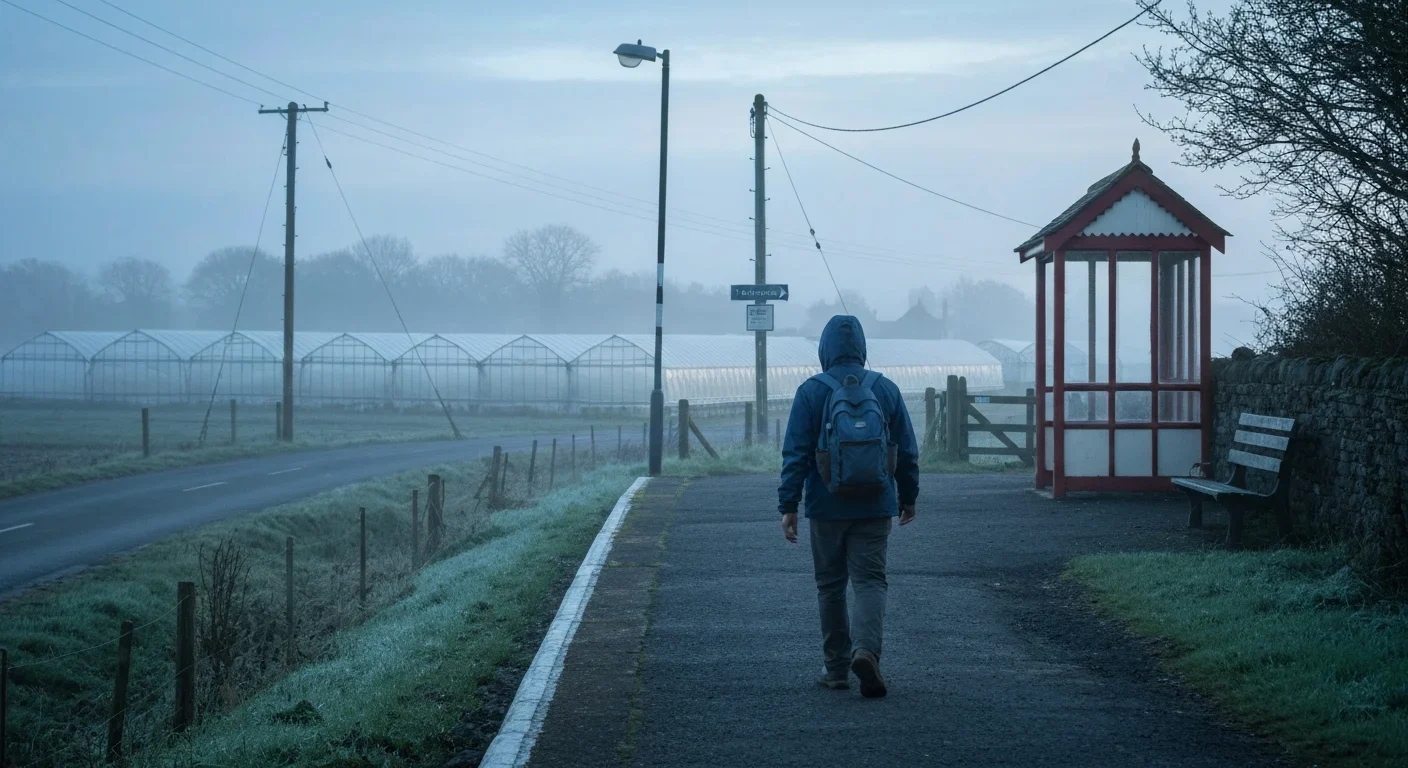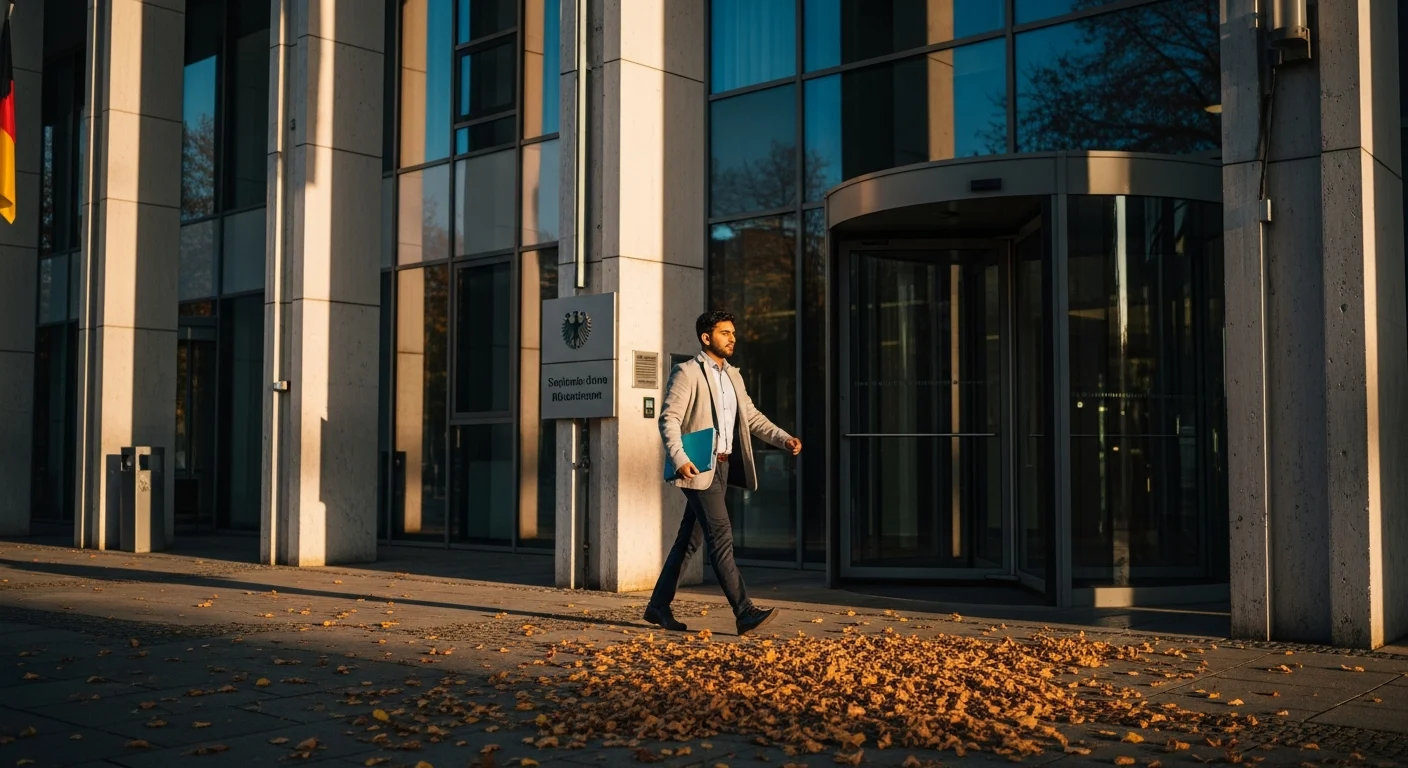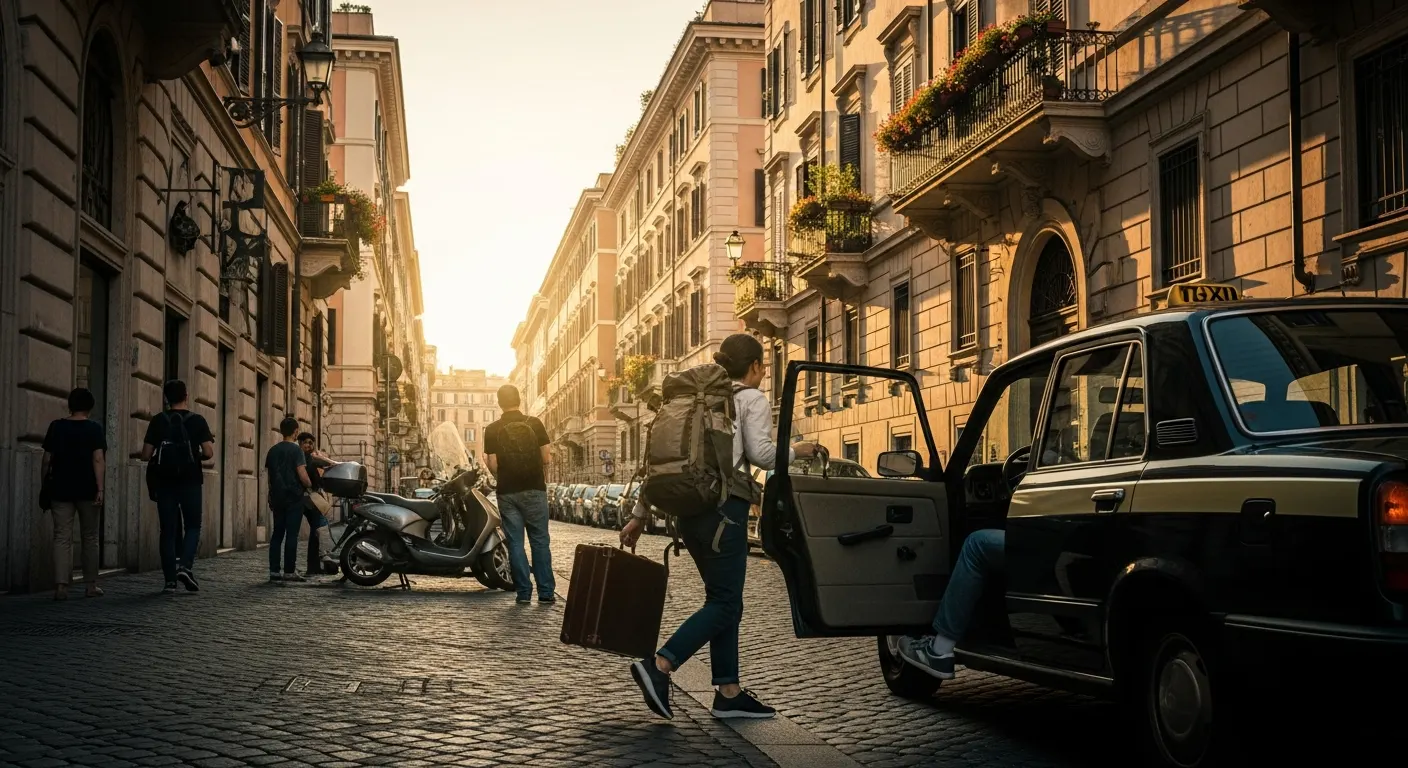Italy Visa Requirements: The Real Rule on Onward Tickets
Picture the visa officer scanning your file. Flights, hotels, insurance, funds. Does your plan show how you leave the Schengen Area on time? That simple question drives most decisions. You do not always see the phrase “onward ticket,” yet you are expected to present a return or onward plan that fits your stated dates. When the story is tight, approvals follow. A reliable dummy ticket provides verifiable proof without the full cost, making your application stand out.
We will show you exactly how to make that story work for Italy. You will see what consulates expect in India, how onward or return proof fits into the wider set of documents, and why matching dates is everything. We will map real itineraries that Indians use. We will separate consulate checks from airline and border checks. Then we will finish with risk controls that keep your application safe. For more insights on visa essentials, check our FAQ or explore blogs for tips. Learn about our service at About Us. Get verified itinerary proof in minutes—dummy ticket booking now.
onward ticket for Italy tourist visa is one of the most useful documents travelers prepare when organizing international trips. While most countries do not ask you to buy a fully paid ticket upfront, they do expect a verifiable proof of travel intent that clearly shows your entry and exit plan. This helps demonstrate that you will follow your schedule and return on time.
Using a professionally issued and verifiable onward ticket for Italy tourist visa is the safest and most convenient way to satisfy this requirement without financial risk, especially for visa applications and immigration preparations.
Last updated: November 2025 — verified against the latest traveler documentation practices and global consular guidelines.
Planning your Italy trip? A dummy ticket ensures your onward proof is ready, verifiable, and budget-friendly. This guide dives deeper into making it seamless.
What Visa Officers Really Look For In Your Italy File
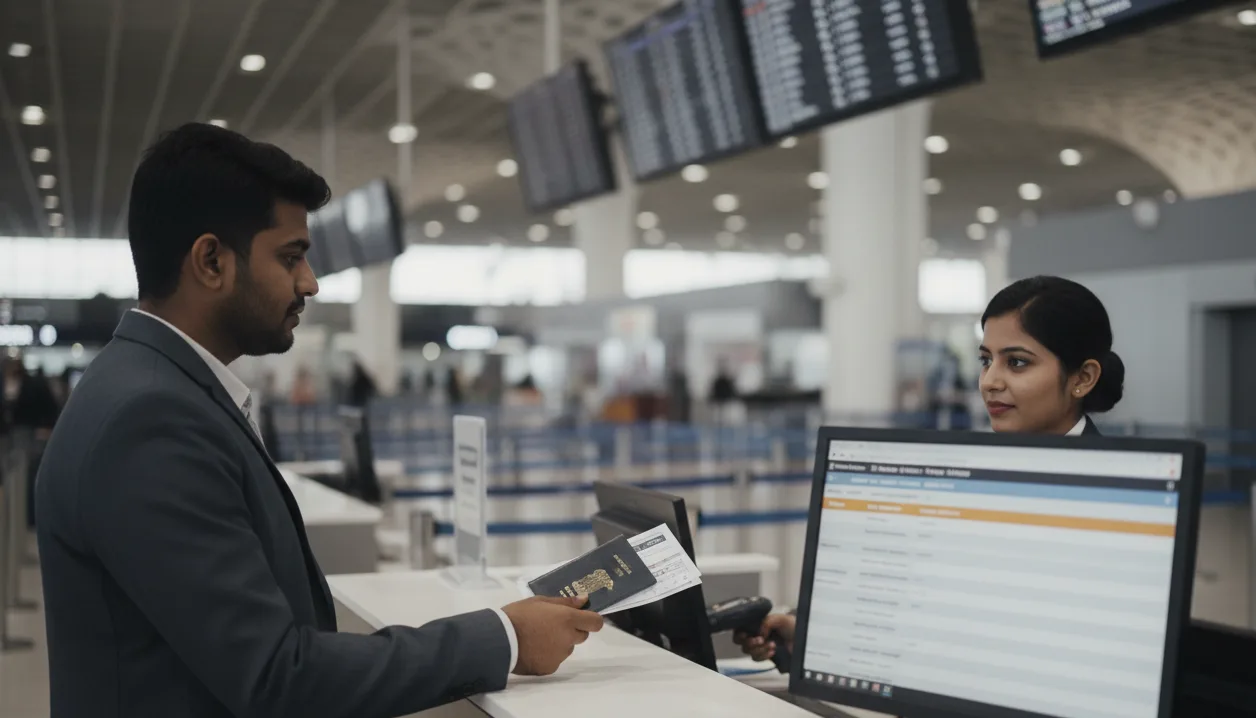
You are not trying to impress anyone with fancy PDFs. You are proving you will leave on time. That single outcome drives how Italian and Schengen consulates read your file in India.
Before we dive into the pieces, remember this. Officers reward applications that feel effortless to verify. We build toward that. Align your visa dates without paying full fare—book a dummy ticket today.
The Real Meaning Of “Proof Of Return Or Onward”
You rarely see “onward ticket required” in bold letters. What you see is “travel itinerary” or “proof of return.” The intent is the same. The officer wants to see a credible way out of the Schengen Area that matches your declared dates and budget.
Think of it as the last page of your trip. If the ending makes sense, the middle feels safer. If the ending is missing or weak, everything else starts to look risky. A dummy ticket bridges this gap perfectly, offering a PNR-verifiable reservation that's easy to update.
Italy’s Role Inside Schengen Rules
Italy is not inventing its own system. Schengen logic is shared. You apply through the country where you spend most nights or your first entry if nights tie. When you apply through Italy in India, the officer still reads your whole file. If you show Milan to Rome to Paris, then home, the file must prove that Italy is your main base or your first entry. If another country looks like the true focus, questions follow.
What works best is a simple rule. Show that your chosen consulate makes sense for your route. If Italy is the longest stay, your hotel stack should reflect that. If Italy is the first entry, your flight proof should land there even if you spend nights elsewhere later. For official Schengen guidelines, see Schengen Visa Info.
The Coherence Test That Decides Outcomes
Officers do not only check documents. They test whether your plan tells one consistent story. We call it the coherence test. It has four pillars.
- Dates align. Entry and exit dates on the application match your flight reservations, hotel check-in and check-out, and insurance start and end.
- Cities flow. The path between cities makes sense. No overnight gaps. No teleporting from Venice to Nice with no transport in between.
- Budget fits the plan. Bank statements and cards support the stay length and style. A premium itinerary with thin funds creates friction.
- Return or onward proof exists. There is a plausible exit from Schengen that closes the loop.
Pass this test, and you make an officer’s job easy. Fail it and you invite a request for more documents or a refusal. Integrating a dummy ticket early ensures this alignment without commitment.
Evidence That Punches Above Its Weight
You do not need to drown the officer in papers. You need the right signals.
- Return or onward segments with working references. A reservation that can be checked is stronger than a generic email. If you use a hold, note its validity window.
- Hotel sequence that mirrors your form. List cities in the same order on the form and in your booking confirmations. Add internal transport placeholders only when they add clarity.
- Insurance that covers the full stay plus a buffer. Start at the India departure date if your flight crosses midnight. End after your scheduled exit.
- Clean name hygiene. Match the passport name on every file. Middle names, initials, and hyphenation matter. Use one style.
These items help an officer conclude quickly. The less the officer needs to infer, the better your odds.
Indian Realities That Shape Your Approach
Applications from India go through VFS for most cities. That introduces timing constraints. A flight hold that expires before biometrics can cause panic. Plan validity windows backwards from your slot.
- VFS timing vs holds. Many airline or OTA holds last 24 to 72 hours. Some agency reservations hold longer. Choose the one that will still be alive on your appointment day.
- Bank statements with clear ownership. Ensure the account name matches the passport. If you use joint accounts, include a brief note that you control access.
- Leave letters that match dates. Employers often write generic dates. Ask HR to mirror the application dates to avoid doubt.
We also see common issues with new passports or renewals. If your passport number changed after you made bookings, refresh the reservations so everything shows the new number where applicable. Dummy tickets from trusted providers like DummyFlights handle these updates effortlessly.
How Officers Mentally Triage Files
Picture a desk with stacks of applications. Officers triage by risk and effort. Files that look standard and coherent move quickly. Files with unclear exits, mismatched dates, or unexplained gaps demand time. Time is scarce.
You can tilt the odds by removing friction.
- Put dates on page one of your cover note. Entry, exit, total days, and Italy nights. One line each.
- Name your PDFs sensibly. Surname_GivenName_Flight_20Apr-04May.pdf. Do the same for hotels and insurance.
- Keep the story consistent across all channels. What you write on the form, what your bookings show, and what you say at biometrics must align.
What “Onward Proof” Looks Like When It Works
We see three patterns that work well for Indian tourists.
- Round-trip to and from Italy. Delhi to Milan. Rome to Delhi. Hotels that trace Milan to Venice to Florence to Rome. Insurance covers those dates. Funds support the plan. Simple and strong.
- Multi-country, with Italy as the mainstay. Mumbai to Milan. Trains to Zurich and Paris. Fly out from Paris. Italy holds the most nights, so applying via Italy is logical. The onward proof is Paris to Mumbai with a Schengen exit in France. Still fine, because Italy remains the mainstay.
- Open jaw inside Schengen. Bengaluru to Venice. Out of Rome. The hotel stack shows a clean arc across Italy. The onward flight matches Rome. This reads as a tidy loop.
In each case, the exit segment is believable and checkable. The itinerary feels human. To expand on multi-country trips, our blogs cover detailed strategies.
Common Consistency Traps And How To Avoid Them
Even careful applicants trip on details. These are the usual suspects.
- Midnight flights that break the date math. You depart at 23:55 on the 1st and arrive on the 2nd. Your hotel starts on the 2nd. Your insurance starts on the 1st. That is correct. If insurance starts on the 2nd, fix it.
- City mismatch on the exit. Your last hotel is in Florence, but your exit flight is from Milan with no internal transport shown. Add a train placeholder or adjust the hotel.
- Overstated day plans. A packed schedule with six cities in ten days looks unrealistic. Keep it plausible.
- Old reservations with expired validity. Refresh holds before biometrics. Expired proof signals disorganization.
Run a final five-minute audit the night before your appointment. It saves a week of anxiety. For troubleshooting tips, visit our FAQ.
How Much Detail Is Enough
There is a balance. You want the officer to see the outline and understand the path. You do not need every train ticket. Show a train for a long jump if it resolves a gap. Omit minor shuttles that crowd the file.
Use a one-page day plan. City, two or three sights, and a brief note like “evening train to Florence.” It anchors the hotels and the flights without turning into a diary. This level of detail pairs well with a flexible dummy ticket for adjustments.
The Officer’s Risk Lens And Your Ties To India
Onward proof is also a proxy for ties. A return date suggests you intend to be back. Your funds, employment, property, or family responsibilities reinforce that. You do not need to list your entire life. You need enough anchors to make the exit date credible.
- Employment tie. Leave a letter that states your return to work date after your exit date.
- Financial tie. Regular salary credits. Reasonable closing balance. Avoid sudden large cash deposits.
- Travel history. Prior visas with timely returns help. Do not overclaim. Let stamps speak.
Think of these as background strength. They make the onward segment more than a piece of paper.
When You Should Refresh Or Rebuild Reservations
Plans shift. Appointments move. If a reservation no longer matches your form, rebuild the file. Do not hope the officer overlooks it.
Refresh in these cases.
- The hold expires before biometrics.
- Your appointment has been rescheduled by more than three days.
- A hotel changed the check-in by a day.
- Your employer changed your leave dates.
When you refresh, keep the route and city order the same. Consistency between versions matters. Dummy tickets excel here, allowing unlimited changes.
A Simple Assembly Order That Works
We have seen this order help officers skim fast and approve confidently.
- Cover note with dates, Italy nights, and short route.
- Flight reservation with return or onward segment highlighted.
- Hotel confirmations in the city are ordered with nights counted.
- Insurance certificate covering the full stay and buffer.
- Bank statements and cards with a short note on the average daily cost.
- Employment proof or business registration, if relevant.
- Day plan on one page that mirrors the hotel sequence.
Keep everything clean and legible. Use a single font if you can. Avoid clutter.
Italian and Schengen consulates in India are asking a practical question. Do you have a believable way out that fits a coherent plan? Your job is to make that answer obvious. Show a checkable return or onward segment. Align every date and city around it. Keep the budget realistic for the plan you present. Build a file that an officer can read in minutes without doubt.
Do this and you move from hopeful to prepared. The rest of the process becomes routine. To deepen your understanding, dive into our About Us page for service reliability.
Where Onward Proof Sits In A Strong Italy Visa File

Your documents do not live in isolation. They work as a set. The onward or return segment is the hinge that lets the rest of your file swing into place.
Let us build from that hinge and show how each piece supports the next. Keep it simple, precise, and India-ready. Need a checkable PNR for your file—start a dummy ticket booking.
Build The File Around Dates, Not Documents
Start with dates. Everything else follows.
Pick your Schengen entry and exit dates first. Then anchor all proofs around them. When the officer scans your file, those dates should repeat like a chorus.
- Flight reservation is the spine. Lock your provisional entry and exit times. Note night crossings. If you land on the 3rd at 07:20, your first hotel should start on the 3rd.
- Hotel stack in the same rhythm. Book confirmations that begin the day you arrive and end the day you fly out, or the day before if you leave early morning.
- Insurance that envelopes the trip. Begin coverage on the India departure date if your flight leaves before midnight. End it the day after you exit to cover delays.
- Application form that mirrors reality. The form’s arrival and departure lines should match the flights. The total days should match the accommodation count.
When dates align, your onward or return proof looks like a natural conclusion, not a disconnected attachment.
Make Flights Work With Everything Else
Your flight evidence is not just a ticket. It is the backbone of your story. Use it to guide the rest of the file.
- Match city endpoints to hotels. If you depart India for Milan and exit from Rome, your hotel sequence should trace that path. No last-night hotel in Florence with a dawn flight from Milan without a noted transfer.
- Respect the time math. Late-night departures can shift dates. If your flight out of Rome leaves at 00:35 on the 18th, your last hotel night is the 17th. Your insurance should still show the 18th.
- Show internal travel only when it fills a gap. Long jumps, such as Venice to Zurich, are worth a placeholder train or flight. Short hops like Florence to Pisa do not need paperwork if hotels link cleanly.
The goal is harmony. The onward segment closes a journey that already makes sense on paper.
Accommodation, Insurance, And Funds Must Interlock
Officers look for the chain between where you sleep, how you are protected, and how you pay for it. The onward or return element locks this chain.
- Accommodation proof that matches the nights. Count nights in Italy. If Italy is your main destination, it should hold the most nights in your stack. That supports applying in Italy.
- Insurance that covers every day. Many Indian applicants miss one day at the start or end. Add a one-day buffer after exit to avoid arguments at the counter.
- Funds that match the ambition. A one-city, budget-friendly loop needs less proof than a five-city premium sprint. Align daily cost notes with what your hotels imply.
You do not need to over-document. You need to eliminate doubt.
An India-Focused Timeline That Avoids Expired Holds
VFS timing drives your strategy. Plan backwards so your onward or return reservation stays valid when you submit.
Here is a practical sequence that works for most Indian cities.
- Check VFS slots first. Estimate your biometrics date range.
- Choose the reservation type by validity. If appointments are tight, a short hold may work. If slots drift, prefer a verifiable agency reservation with longer validity.
- Prepare a refresh window. Two to three days before biometrics, refresh any flight holds that expire. Keep the routing and city order identical to the earlier version.
- Print and save PDFs. Carry a paper copy for counters where systems lag. Store clean PDFs on your phone.
This sequence prevents the classic failure where the onward reservation expires the day before your appointment.
Keep Names And Numbers Consistent Across Proofs
Minor inconsistencies slow files. You can prevent them with a short checklist.
- Passport name format. Use the same order and spacing across flights, hotels, and insurance. Middle names should appear the same way everywhere.
- Passport number updates. If you renewed your passport after booking, reissue flight and insurance proofs with the new number where possible.
- Contact details. One phone number and one email across all documents. It reduces verification friction.
These are small wins that add up to a smooth review.
How Officers Read Your Exit Plan In Different Itineraries
Your onward or return element will look different by route. Make it obvious in each case.
- Classic round trip. Mumbai to Rome. Rome to Mumbai. Hotels show Rome, Florence, Venice, and Milan. Exit fits the final city or includes a documented transfer. Clean and strong.
- Multi-country loop with Italy as main mainstay. Delhi to Milan. Italy for most nights. Then, Paris for a few days. Return from Paris to India. The onward proof is the Paris to India leg. Italy still holds the most nights, so applying via Italy is correct.
- Open jaw inside Schengen. Bengaluru to Venice. Out of Rome. Hotels trace a southbound arc. The exit flight is from Rome. The story reads naturally.
- Applying via Italy, but first entry elsewhere. You apply through Italy because it holds the most nights, but you land in Zurich. Show a short transfer to Italy on day one. Keep Italy’s night count highest. Your onward proof can still be from an Italian city or another logical Schengen exit.
- Continuing to a non-Schengen country. Chennai to Milan. After Italy, you fly from Rome to Istanbul, then from Istanbul to Chennai. Show the Rome to Istanbul segment as your onward proof. Mention the India-bound ticket only if it is booked, or keep it clear in your cover note.
In all cases, the exit plan should be checkable and consistent with hotels and insurance.
Document Format That Speeds Review
Presentation matters. It saves the officer time and reduces questions.
- Clear file names. Surname_GivenName_Flight_05Mar-18Mar.pdf. Do the same for hotels and insurance. Use the same dates in the names as on the documents.
- One-page day plan. City by city. Two or three lines per day. Add a short note where you travel between cities.
- Highlight exit segments. On your flight PDF, mark the return or onward line with a simple box or underline. It draws the eye to the key proof.
Aim for clarity. You are telling a story that should be understood at a glance.
Budget Notes That Match Your Route
You do not need a finance essay. You need a simple, believable map of how you will pay.
- Daily cost estimate. A short note, such as “€110 per day x 12 days” linked to your bank balance works well.
- Card strategy. If you rely on cards, include a one-line note that international usage is enabled. Many Indian banks block by default.
- Cash limits. Do not promise to carry large cash. It raises questions. Show accessible funds instead.
The onward or return proof feels credible when money and dates align.
When A Verifiable Reservation Beats A Refundable Ticket
There are moments when paying full fare early is a poor idea. Appointments move. Plans evolve. A verifiable reservation keeps you flexible without looking vague.
Use it when:
- Your VFS slot is within days, and you cannot risk nonrefundable tickets.
- You need a longer validity than an airline’s 24-hour hold.
- You must change dates to match a new appointment without rewriting the route.
Keep the reservation checkable by PNR. Make sure your name and dates match your form and hotels. This keeps your onward or return proof strong while you protect your wallet.
A Cover Note That Connects The Dots
A short cover note can tie everything together. Keep it crisp.
- First line. Trip dates, total days, and Italy nights.
- Second line. City sequence with a simple arrow. Milan → Venice → Florence → Rome.
- Third line. Exit summary. “Return from Rome to Mumbai on 18 March per attached reservation.”
- Fourth line. Insurance dates and average daily budget.
The officer should finish the note and understand exactly how your onward or return proof fits the trip.
Final Assembly Check Before Biometrics
Run a final review the evening before your appointment. It is a five-minute routine that prevents delays.
- Flight reservation dates equal the application form.
- Hotels start the day you arrive and end the day before or on exit.
- Insurance begins when you leave India and ends the day after you exit Schengen.
- Bank statements show recent activity and a sufficient balance.
- Names and passport numbers match everywhere.
- The onward or return segment is valid, legible, and easy to spot.
If anything slips, refresh only the item that changed. Keep the route and city order identical to maintain consistency.
Your File Strategy
Your onward or return proof is not an optional extra. It is the structural piece that aligns your entire file. Start with dates, make flights and hotels sing the same tune, wrap the trip with insurance, and show funding that fits the plan. Present it cleanly so the officer can confirm everything without digging.
When you treat the exit plan as the hinge and build the rest around it, your Italy application reads as coherent, credible, and ready for approval. For more on building strong files, see our blogs.
Real-World Itinerary Scenarios And How Your Onward Proof Should Look

Most visa files fall into a few familiar patterns. When you know what the officer expects in each pattern, your onward or return proof becomes easy to show and hard to question.
Let us walk through the common routes we see from India and map the exact evidence to attach for each. Reschedule with zero stress—book a dummy ticket that allows date changes.
Classic Round Trip From India To Italy
This is the simplest path. You fly from India to Italy and return to India from the same or a different Italian city. The onward proof is your return leg to India.
What the officer expects:
- Return the segment that matches your last city. If your final hotel is in Rome, your exit should be from Rome or include a clear train to the departure airport.
- Hotel arc that mirrors the route. Milan to Venice to Florence to Rome is a clean sequence. No unexplained jumps.
- Insurance that shadows your flights. Start on the India departure date. End one day after your exit.
- Funds aligned with nights. More nights need stronger balances.
India-specific tips:
- Late-night returns. If your flight leaves at 00:40, your last hotel night should be the previous calendar day. Add a line in your day plan that you transfer to the airport late evening.
- Airport choices. Many itineraries enter via Milan and leave from Rome or vice versa. That reads well if your hotel stack follows the same logic.
Proof checklist:
- Flight reservation showing India to Italy and the return to India.
- Hotels in the city order.
- Insurance for the full period with a buffer day.
- One-page day plan matching hotel moves.
Multi-Country Schengen Loop With Italy As The Main Stay
You spend the most nights in Italy, but you also visit other Schengen states. You apply through Italy. Your onward proof might show a departure from another Schengen city.
What the officer expects:
- Italy is the anchor. Italy holds the highest night count. Your hotel stack makes this obvious.
- Logical cross-border flow. If you go from Italy to Switzerland to France, the city order should make sense on a map.
- Clear exit from Schengen. If you fly out of Paris, your onward proof is Paris to India.
India-specific tips:
- Train placeholders. Add a reserved or indicative train between the last Italian city and the first city in the next country if the gap looks large.
- Budget signals. Cross-border loops increase daily costs. Show card limits or balances that reflect that.
Proof checklist:
- Flight reservation to Italy.
- Hotel sequence showing Italy nights lead.
- Onward reservation from the final Schengen city to India.
- Insurance covering the entire loop.
- Short note in your cover letter that Italy is the main destination.
Open-Jaw Tickets Inside Schengen
You arrive in one Italian city and fly out of another. This is common and officer-friendly when your hotel arc is tidy.
What the officer expects:
- An arc that connects endpoints. Venice in, Rome out. Hotels flow south. No backtracking without a reason.
- Exit that fits the last hotel. The Rome hotel ends the day you fly out or the day before if the flight is early morning.
India-specific tips:
- Train clarity. If you have a long jump between cities, include a train or flight placeholder for that leg. It removes doubt about how you move.
- Airport transfers. If you plan to fly out of Milan but your last city is Florence, add a line about the fast train to Milan Centrale and Malpensa transfer time.
Proof checklist:
- Flight reservation from India to the entry city and exit city to India.
- Hotels that match the arc.
- One-page day plan with a simple travel note on transfer days.
- Insurance and funds are in sync with nights.
Applying Via Italy, But First Entry Is Another Schengen State
You apply through Italy because it holds the most nights, yet your first landing is in another Schengen country. This is acceptable when explained well.
What the officer expects:
- Fast transfer to Italy. Land in Zurich, take a same-day train to Milan, then spend most nights in Italy.
- Italy night count on top. The hotel stack proves Italy is your main destination.
- Exit that fits your final city. Outbound could be from Italy or another Schengen city if your last nights are there.
India-specific tips:
- Day one narrative. Add one sentence in your cover note: “Arrive Zurich at 09:35, same-day train to Milan, Italy, nights begin Day 1.”
- Ticket timing. If the first transfer involves a separate ticket, match times so there is no unrealistic sprint through immigration.
Proof checklist:
- Flight into the first Schengen city.
- Internal transfer ticket or placeholder to Italy on day one.
- Hotels showing Italy nights lead.
- Onward proof from the final Schengen city to India.
- Insurance spanning the entire journey.
Continuing From Italy To A Non-Schengen Country
You exit Schengen from Italy and continue to a third country such as the UK, Turkey, or the UAE before returning to India. Your onward proof is the flight out of Schengen.
What the officer expects:
- Clear Schengen exit. Rome to Istanbul, for example. That segment is your onward proof.
- Subsequent legs are optional. If your India-bound ticket is not issued, you do not need to include it. The Schengen exit is the key.
- Hotels match the exit city. Your last hotel is in the city of the exit airport, or you will show the transfer.
India-specific tips:
- Visa layering. If the next country requires a visa, mention status briefly only if it is relevant and ready. Avoid adding uncertainty if that visa is still pending.
- Transit clarity. If you switch airports in the third country, include a simple line in your day plan so your timing looks realistic.
Proof checklist:
- Flight reservation to Italy.
- Onward segment from Italy to a non-Schengen country.
- Hotels ending in the exit city.
- Insurance covering until Schengen exit, plus a buffer day.
- Funds reflecting the full period in Schengen, not the entire wider trip.
One-Way Into Schengen With Return From Another Country
You fly from India to Italy one way, then return to India from a different country after visiting more places. Your file must prove a timely Schengen exit, even if the final India return is later.
What the officer expects:
- Defined Schengen exit. Show the flight from the last Schengen city to the first non-Schengen destination. That is your onward proof.
- Reasonable time frames. Do not imply you will remain in Schengen beyond your insurance and hotel period.
- Clean city progression. Hotels link the sequence to the exit airport.
India-specific tips:
- Cover note clarity. State that you exit Schengen on the date shown and continue your trip outside Schengen. Keep it short.
- Separate budgets. Ensure your bank balance comfortably supports the Schengen portion. Do not load the file with unrelated long-haul costs.
Proof checklist:
- One-way into Schengen.
- Onward segment out of Schengen.
- Hotel stack and insurance for the Schengen portion.
- Simple day plan through the exit date.
Handling Families, Groups, Or Mixed Routes
Group files add moving parts. The onward proof should scale without confusion.
What the officer expects:
- Same exit date for all applicants. If one traveler exits a day later, explain with a matching hotel booking.
- Aligned names across reservations. Family names must appear consistently. Children should match passport names exactly.
- Shared budget evidence. If one account funds the trip, include a short note authorizing travel costs for dependents.
India-specific tips:
- Multiple PNRs. If you split over two bookings, link both in the cover note so the officer sees the full group movement.
- Stroller and baggage time. Build realistic layovers. Tight connections raise avoidable questions.
Proof checklist:
- Exit proof for the entire group with matching dates.
- Hotel bookings that list all guests or include linked reservations.
- Insurance for each traveler with identical start and end dates.
When Your Plan Is Flexible But Your File Cannot Be
Many travelers want flexibility. The visa file cannot look flexible. It must look fixed.
What the officer expects:
- A concrete exit date. Even if you plan to change later, your reservation shows one believable end.
- Consistency across proofs. Flights, hotels, insurance, and forms point to the same dates.
India-specific tips:
- Appointment drift. VFS slots may move. Use reservations you can refresh without changing the route. Keep the city order the same across versions.
- Work letters. Ask HR to mention the return-to-work date that follows your exit from Schengen. It strengthens the story.
Proof checklist:
- Verifiable exit segment tied to a stable route.
- Hotels in the same city ordered after refresh.
- Insurance updated if dates shift.
- Cover note with the same route and new dates if refreshed.
Troubleshooting Common Scenario Errors
When a file is otherwise strong, small issues still trip it up. Fix them early.
- Exit airport mismatch. Final hotel in Naples, but exit from Milan on the same morning with no transfer proof. Either add a late-night train or switch the last hotel night to Milan.
- Insurance ending too soon. Exit at 23:55 on the 12th, but insurance ends on the 12th at midnight. Extend to the 13th.
- Unverifiable emails. Forwarded emails without clear booking references look weak. Use PDFs with visible PNRs or confirmation numbers.
- City counts off. Application says 9 days, hotels show 10 nights. Correct the form or the hotels so the math matches.
A five-minute check catches these every time.
Scenarios differ, yet the officer’s logic stays the same. You present a path that begins in Schengen, flows through cities that make sense, and ends with a timely, checkable exit. Your onward proof is not a standalone file. It is the last piece in a story that already reads as coherent and credible.
When your route is classic, keep it clean. When your route is complex, make the transitions obvious. Either way, match dates across flights, hotels, insurance, and forms. Do this, and your onward or return segment will feel like the natural conclusion of a well-planned trip. For family travel advice, our FAQ has more.
Smart Ways To Show Onward Or Return Proof Without Paying Full Fare
You want strong evidence. You do not want to burn cash on a nonrefundable ticket. Good news. There are practical, officer-friendly methods that work for Italy applications in India, including scenarios where you hold a Schengen visa or you are still building the file.
Let us map what actually holds up at the counter, how to keep dates aligned, and when a simple refresh saves your file at the visa application centre during peak travel seasons. Keep your application coherent and affordable with a quick dummy ticket booking.
Use Refundable Or Held Bookings Strategically
Refundable tickets and time-limited holds can be useful if you manage the clock while navigating the visa application process.
Know the window. Some airlines let you hold a seat for 24 to 72 hours. Others offer fully refundable fares with a penalty after a week. You are buying time. Plan your Italy visa appointment around that window so your onward segment is alive when you submit.
Pick routes with realistic prices. A refundable Milan return during school holidays can be expensive. If you only need proof for the file, check a cheaper routing that still fits your cities and dates for a Schengen short stay visa.
Document the hold. Save a PDF showing the itinerary, passenger name, and a booking reference. Screenshots that hide the reference create doubt and slow the application process.
Set reminders. If the hold expires the night before your VFS slot, refresh it two days earlier. Keep the same route and city order to avoid raising questions about the visa application form.
Refundable and held bookings are fine, but they require discipline. If you cannot control the timing, choose a longer-validity option that still aligns with entering Italy on your declared travel date. Dummy tickets offer superior flexibility here.
Lean On Airline And OTA Short Holds With Care
Many Indian travelers use airline or OTA 24-hour holds to avoid upfront payment. This can work, but only if the reservation is actually verifiable and matches the documents required list you plan to submit.
Check verifiability. Some emails look like holds but do not create a record in the airline system. If the officer cannot confirm a PNR, the value drops, especially for indian passport holders applying in large metros.
Mind settlement times. A few OTAs auto-cancel if payment does not settle in time. That can happen overnight with certain Indian bank cards when you apply for a visa close to the weekends.
Avoid ghost itineraries. If your email lacks a booking code, it is not proof. You need a reference that an airline can read, which also helps if the Italian embassy requests additional documentation.
Short holds are a tactical tool. Use them when your appointment is imminent and you can refresh if needed, particularly when the Italian visa processing time is uncertain.
Consider GDS-Backed Agency Reservations For Stability
A GDS reservation creates a live record that officers can verify. It balances flexibility with credibility for indian nationals who need a clean exit plan.
Why does it help? The PNR is checkable. Your name displays as per the passport. The itinerary can be reissued with adjusted dates if your appointment shifts, which supports a valid Schengen visa narrative.
What to watch. Ensure the reservation corresponds exactly to your application dates. Mixed date sets create questions that slow processing time and may prompt a request for the following documents.
How to present. Print the full itinerary page that shows the PNR and segments. Avoid forwarding emails without the core details, and keep your passport details identical across files.
This is often the sweet spot for applicants who want reliability without buying full fares when they apply for a visa during busy months. Services like DummyFlights specialize in these GDS-backed dummy tickets.
A Quick Word On Reserved Trains And Internal Hops
You do not need every ticket inside Schengen. Use placeholders only where they solve a continuity gap and help the officer connect hotels to your exit.
Show long jumps. Venice to Zurich or Paris to Rome deserves a reserved train or low-cost flight screenshot. It ties your hotels together and supports the story across EU countries.
Skip micro hops. Florence to Pisa for a day trip does not need paperwork if the hotel sequence is clean and your short stay visa dates already fit.
Keep names consistent. If you include reserved trains, ensure names match the passport format used elsewhere, including any previous passports listed in your file.
Internal transport is there to prove coherence, not to impress, and it should align with any previous Schengen visa travel history you mention.
Documentation Quality That Speeds Approvals
Presentation is part of the proof. Officers read faster when your files are clean and the necessary documents are easy to spot.
Readable PDFs. Use crisp PDFs, not pixelated screenshots. Include passenger names, dates, and booking references on the same page so the required documents are obvious.
Consistent file names. Surname_GivenName_Flight_10Jun-23Jun.pdf. Use the same pattern for hotels and insurance to mirror the required documents checklist.
One-page index. Put a simple index on top of your bundle. It saves everyone time and helps if you opt for a premium lounge facility or value-added services at submission.
Small touches reduce questions. Less back and forth means faster outcomes, especially when the courier facility or courier assurance facility returns your passport.
Keep Dates In Lockstep Across Proofs
Your onward or return segment is only as good as the dates around it. Align everything so the officer sees a single story.
Flight to the hotel. If you land on the 7th at 08:30, the first hotel starts on the 7th. No gaps that suggest non-business-related purposes.
Hotel to exit. Last hotel ends on the 20th if your exit is late at night, or the 19th if you fly out at 00:20 on the 20th and head to the airport the evening before. Please note that midnight departures cause most errors.
Insurance buffer. Begin coverage on the India departure date. End one day after your scheduled Schengen exit so your travel insurance supports a clean exit.
Application math. The total days on your form should match the nights you booked. Check once. Then check again to ensure 90-day limits are not accidentally implied.
Aligned dates make your onward proof look inevitable instead of optional when the Italian Ministry guidance is considered.
India-Specific Banking And Card Issues To Watch
Payments and verifications can fail for local reasons. Plan for them and present clear financial documents.
International card use. Enable international usage on your card before you attempt to hold or book. Many banks keep it off by default, which can derail applying online.
OTP delays. A few OTAs time out while you wait for an OTP. Keep a second card ready or use net banking if supported when booking near your visa appointment.
Refund timelines. Refundable fares may take days to reverse to Indian accounts. Avoid stacking multiple refundable tickets if cash flow is tight, and keep pension statements separate from trip money if you include them.
A calm payment plan keeps your reservations alive and your file tidy, proving sufficient financial means without drama.
Avoid The Pitfalls That Sink Otherwise Strong Files
Most refusals in clean files trace back to preventable mistakes. Dodge these before you finalize the required documents.
- Expired holds at biometrics. If your hold expires, the officer sees a dead itinerary. Refresh 48 hours before your slot to match a realistic processing time.
- Invisible booking references. A PDF without a PNR or booking code is noise. Make sure the reference appears on page one so the visa for Italy story is clear.
- Route conflict. Last hotel in Florence, exit flight from Milan, no transfer evidence. Add a fast train placeholder or realign the last night, especially if you want multiple entries later.
- Insurance gaps. Crossing midnight without coverage is a classic error. Extend to cover delays so your application process stays smooth.
- Name formatting drift. Middle names move. Hyphens vanish. Use one format across all files, including the original passport copy and any birth certificate you submit for a family member.
One five-minute audit catches every item on this list and reduces the need for a separate visa in other countries you may visit after Italy.
When It Makes Sense To Use A Verifiable Reservation
Most of the time, your goal is simple. You must prove a realistic exit without buying a full ticket. A checkable reservation solves that need when visiting family or planning business meetings.
We keep the pitch short and relevant.
For this use case only: If your VFS date is near or shifting, and you want a live, checkable PNR that matches your Italy file, DummyFlights.com provides instantly delivered flight reservations with verifiable PNRs for approximately ₹1,300 per reservation. You can change dates later without extra fees. Use it to keep your onward or return proof aligned while your plans firm up, whether your visa type is a tourism or Italy business visa for business purposes.
That is it. Use the tool when it fits the situation, not as a habit.
Decide When To Convert A Reservation Into A Paid Ticket
After visa issuance, you will want to lock flights. Do it deliberately so the narrative still suits indian passport holders with a short trip.
Keep the route. Buy the real ticket with the same entry and exit cities you showed in your file. Consistency at boarding avoids questions about visiting India later or traveling freely to other countries.
Mind late-night departures. If your reservation had a 00:30 exit and you buy a 22:45 exit instead, adjust your last hotel night so the dates still make sense in your records and match any invitation letter you used.
Print both versions. Carry the reservation and the final e-ticket to the airport. Airline counters sometimes like the paper trail, and company letterhead on any supporting letters should match your file.
Conversion is about continuity. The story you told should remain true and should not trigger questions about long-term visa intent or permanent residence.
Build A Refresh Routine That Never Fails
Plans move. Reservations expire. A simple routine keeps you safe while you prepare the necessary documents.
T minus 5 days. Verify all dates and names across flights, hotels, insurance, and forms, including any previous passports you referenced.
T minus 3 days. Refresh any short holds. Reissue agency reservations if dates shifted. Keep the route and city order identical to avoid variations depending on explanations.
T minus 1 day. Print everything, label PDFs, and pack a paper set. Save backups offline on your phone so the courier assurance facility can return items without delays.
This rhythm handles almost every timing issue Indian applicants face, whether for a student visa, a study visa, or a short tourism plan.
A Simple Cover Note That Sells Your Exit
A short note can spotlight your onward or return segment without extra pages and helps staff tick off required documents quickly.
Dates and duration. “Entry 10 June, exit 23 June, 13 days total,” aligns with short-stay visa rules.
City flow. “Milan → Venice → Florence → Rome” keeps the sequence obvious if a family member travels with you.
Exit proof. “Return from Rome to Mumbai on 23 June, PNR ABC123,” sits under required documents and matches your original passport copy.
Insurance and funds. “Insurance 10–24 June. Sufficient funds available as per attached statements,” pairs cleanly with financial documents.
One paragraph helps the officer see what matters first and reduces any request for additional documentation.
You do not need to gamble on full fares to present a strong exit plan that fits an Italian visa application. You need verifiable reservations, aligned dates, clear PDFs, and a refresh habit that respects VFS workflow and the visa appointment you secured. Choose the proof type that matches your window. Keep your city order stable if you must shift dates. Make the onward or return segment the natural end of a coherent route so your application can move without a premium delay or value-added services you do not need.
Who Checks What: Consulate, Airline, And Border Control Play Different Games
You are dealing with three separate checkpoints. Each one looks for different things at a different time. When you know their logic, you prepare once and glide through all three.
Let us break the roles down, then rebuild your pack so it works everywhere without last-minute fixes. Flying soon and need onward proof—book a dummy ticket in seconds.
What The Consulate Actually Evaluates In India
Think of the consulate as a risk assessor. It decides whether to issue a visa based on a coherent plan and credible ties to India.
What the officer wants to see:
- A believable itinerary. Entry and exit dates that match your hotel sequence and insurance.
- Intent to leave. A return or onward segment that fits your declared stay. Not just a word like “onward,” but a segment that closes the loop.
- Means to pay. Bank statements and cards that support the daily costs implied by your hotels.
- Ties to return. Employment, business, studies, or family responsibilities that make your exit date real.
How decisions form:
- Officers do not usually call airlines to validate seats. They judge whether your reservation looks standard and checkable.
- They check for mismatches. If your form says 11 days but your hotels show 12 nights, expect questions.
- They read quickly. Clean file names and a one-page cover note help your onward proof stand out.
Your goal here is clarity. The onward or return segment should feel like the natural end of a trip that already makes sense.
What Airlines Verify At Departure In India
Airlines are not stamping visas. They protect themselves against fines for transporting inadmissible passengers. Their checks happen at the airport on your day of travel.
What staff may ask for:
- Passport and a valid visa. Basic, but many issues start here.
- Evidence of exit. Some carriers ask to see a return or onward segment from the Schengen Area, even if your visa is issued.
- Accommodation proof for the first night. Done quickly if your PDFs are clear.
- Insurance on request. Not universal, but easy to show in a pinch.
Ground reality in Indian airports:
- Staff work under pressure and use standard playbooks. A clear PDF with a visible PNR gets a quick nod.
- They may ask for paper printouts if systems lag. Keep a paper set ready for counters with slow terminals.
- If your onward proof is from a different city than your last hotel, they will ask how you get there. A simple train placeholder resolves it.
Your goal here is accessibility. You should be able to show the right page in seconds, online or on paper.
What Schengen Border Officers Care About On Arrival
Border police decide if you enter the territory. A visa in hand does not guarantee a wave through. They can still ask for your plan and your exit.
What they may ask:
- Where do you stay first? Show the first hotel and address.
- How long do you plan to stay? Your answer must match the visa and your documents.
- How you exit. A return or onward segment from Schengen that matches your file.
- Proof of means. Cards or cash appropriate for your stay length.
How to handle the booth:
- Keep answers short and factual. The officer has a queue behind you.
- Match your answer to the documents. If your exit is on the 18th, say 18th.
- Have the first hotel and exit PDF offline on your phone. No digging in the email over roaming data.
Your goal here is consistency. You say what your documents say, and you say it simply.
Bridging The Gaps Between The Three Checks
The same itinerary must satisfy three different priorities. Build once for all three.
- For the consulate. Coherence and credibility.
- For the airline. Admissibility and quick verification.
- For border control. Short answers that match visible proof.
Use one pack that covers each purpose. Align dates, city flow, and a visible PNR. The same pages should serve at VFS, check-in, and the border booth.
Document Formats That Travel Well Everywhere
Clean presentation removes friction. It also reduces the chance of secondary checks.
- Single-file PDFs. One PDF for flights, one for hotels, one for insurance. Do not scatter pages across multiple emails.
- Visible references. PNR and confirmation numbers on page one. No tiny footers. No cropped images.
- Logical file names. Surname_GivenName_Flight_10Jul-23Jul.pdf. Mirror the dates across all files.
- Offline copies. Save to your phone's Files app. Airplane mode compatible. Carry printouts for counters that insist.
When staff can find what they need fast, they move you forward.
If Something Goes Wrong At Any Checkpoint
Small issues happen. Prepare answers and fixes that travel well.
- Hold expired at VFS. Replace with a fresh, verifiable reservation that keeps the same route and cities. Add a one-line note in your cover explaining the refresh.
- Airline doubts onward proof. Show PNR and the exit segment page at full brightness. Point to the date and the Schengen exit airport. If the exit is from a different city, show the transfer line in your day plan.
- Border asks for more. Show first hotel, exit reservation, and insurance dates. Keep your voice calm and your answers short.
Escalation is rare when your documents are clear and aligned.
A Carry Pack That Works For All Three
Build a quick-draw pack that you can show anywhere in under ten seconds.
- Front page. One-page cover note with dates, city flow, exit summary, insurance range, and a line on funds.
- Flights PDF. Entry and exit on page one with PNR visible. Highlight the exit leg.
- Hotels PDF. City order with check-in and check-out dates. All names match passports.
- Insurance PDF. Policy page with names and date range.
- Funds snapshot. Last three months in a single PDF for the consulate. For travel days, keep a simple balance screenshot if asked.
Keep everything mirrored on your phone and in print. You now satisfy consulate logic, airline checks, and border questions with the same set.
Examples That Show How The Checks Differ
A few quick scenarios make the differences clear.
- Visa day success, airport hiccup. Your application sails through because the itinerary is coherent. At check-in, staff ask for exit proof. You show the return PNR on page one. They wave you on. Lesson. The airline focuses on the exit leg and visa validity, not your full hotel stack.
- Airport smooth, border questions. Check-in is quick. At the booth, the officer asks where you stay first. You show the Milan hotel and say you exit from Rome on the 18th. They stamp you in. Lesson. Border control wants the first stop and the exit. Keep both handy.
- Consulate requests more info. Dates on the form do not match the hotels. You get a call for clarification. You reissue the hotel confirmation and refresh the exit reservation to the corrected dates. Approval follows. Lesson. The consulate values consistency across forms and proofs above all.
Different priorities, same solution. Clear, consistent documents.
Tips That Save Time At Each Stage
Small habits deliver outsized results.
- At the consulate. Put the exit date and PNR in the top third of your cover note. It saves the officer a search.
- At the airline counter. Open your flight's PDF before you reach the desk. Set screen brightness high. Have the paper copy ready.
- At the border control. Keep the first hotel and exit page in your phone’s recent files. Answer in one sentence.
These habits create a sense of order that staff appreciate.
What Not To Do, No Matter The Checkpoint
A few moves waste time or trigger extra scrutiny.
- Do not show unverified emails. Generic itineraries without booking codes help no one.
- Do not argue policy. Staff at counters follow airline and border rules. Show the right page. Ask what else they need.
- Do not improvise new dates verbally. Say what your documents say. If plans change, update the documents before you travel.
Staying within the four corners of your file always wins.
The Bottom Line On Three Different Gatekeepers
You meet a consulate that evaluates risk, an airline that checks admissibility, and a border officer who confirms entry. Your job is to create one set of documents that answers all three. Start with aligned dates. Make the exit leg obvious and verifiable. Keep hotels and insurance in lockstep with the flights. Package everything in clear PDFs you can show instantly.
Do this once, and you carry a pack that earns quick approvals, smooth boarding, and a simple stamp at arrival. Three checks. One story. Zero stress. For checkpoint prep, check our About Us.
Risk, Reality, And A Bulletproof Itinerary That Survives Scrutiny
Your file can be strong and still face questions. That is normal. What matters is how you plan for risk, how you respond when something shifts, and how you keep your itinerary believable from start to finish.
Let us put guardrails around the process so you can move with confidence.
What If You Apply Without A Clear Exit
Some applicants test the waters with incomplete proof. It often backfires.
- Most likely outcome. You receive a request for additional documents. It slows processing and adds stress.
- Possible outcome. The visa is refused for weak ties or unclear intent to leave.
- Best case if you fix fast. You submit a verifiable exit segment that matches your dates. The officer sees a coherent file and proceeds.
If you are already in this situation, act quickly.
- Match dates first. Align the application form, hotels, and insurance before you add the flight reservation.
- Provide a checkable reference. A visible PNR or confirmation code is your friend.
- Add context. A one-line note in your cover letter that you updated the exit to match refreshed hotel dates shows order, not chaos.
How Strict Is This In Real Life
Strictness varies. You control the parts that matter.
- First-time Schengen travelers. Expect a tighter review. A clean exit with aligned dates is essential.
- Frequent travelers with a good history. Officers scan faster, but mismatches still trigger questions.
- Peak seasons. High volumes mean quick triage. Messy files wait. Clean files move.
The rule that never changes is coherence. A believable exit that fits a logical route wins in any season.
The Playbook For Planners Who Think Far Ahead
Long-term planners often book hotels and activities months out. Then, VFS appointments shift. Keep flexibility without looking vague.
- Anchor route, not clocks. Fix your city order and keep it constant across all versions of your file. Dates can move together as a block.
- Use reservations with controlled validity. Choose proof that can be reissued with new dates while keeping the same route and passenger names.
- Refresh just before biometrics. Two to three days before your slot, reissue the exit reservation and extend insurance to match. Do not rebuild the whole file unless the route has changed.
This preserves the story while handling Indian appointment realities.
For Digital Nomads And Flexible Workers On Tourist Visas
You may work remotely in India but travel on a tourist visa for a short holiday. Your file should reflect a holiday, not remote work.
- Keep the narrative tight. You are visiting Italy for tourism for a defined period. Your exit is fixed and checkable.
- Avoid mixed signals. Do not include coworking bookings or client letters. Stick to hotels and a simple day plan.
- Prove the return is real. A return-to-work date in your employer letter after your exit date strengthens credibility.
Your plan must look time-bound. The onward or return segment is the spine of that story.
Align Every Date Like It Is A Contract
Tiny date mistakes create big doubts. Fix them before anyone else finds them.
- Application form math. Count calendar days between entry and exit. Then match hotel nights and insurance days.
- Time zone traps. An India departure at 23:45 on the 10th that lands in Milan on the 11th means insurance must start on the 10th.
- Midnight exits. If you fly at 00:20 on the 18th, your last hotel is on the 17th. Your insurance should show coverage on the 18th.
Build a habit of checking date lines across every PDF before you print.
The Five-Minute Risk Audit Before You Submit
A short audit catches nearly every avoidable error.
- Names match everywhere. Passport spelling, middle names, and initials are identical across flights, hotels, and insurance.
- Exit fits the last city. If not, show the transfer with a train or a one-line note.
- Insurance envelopes the trip. Start on the India departure, end the day after the Schengen exit.
- Funds align with ambition. Your balance makes sense for the route and nights you present.
- File names are clean. Surname_GivenName_Flight_10Sep-22Sep.pdf. Repeat the pattern for hotels and insurance.
This is the fastest improvement you can make to any file.
If Plans Change After You Submit
Life moves. Your file can move with it, as long as the story stays the same.
- Minor date shift before biometrics. Refresh the exit reservation and insurance. Keep the same route and city order. Add a short line in your cover note that the dates were updated to match the new appointment.
- Hotel swaps in the same city. Replace confirmations, but keep the check-in and check-out grid identical. Officers care about dates and city order more than hotel brand.
- Big route change. If you switch from a north-to-south arc to a south-to-north arc, rebuild the file. Consistency beats patchwork.
Keep a version log for yourself so you do not mix old and new PDFs on submission day.
Present Money Like An Adult, Not A Magician
Financials do not need theatrics. They need clarity that fits your plan.
- Show normal flows. Salary credits, routine spending, and a sensible closing balance support a tourist itinerary.
- Avoid sudden deposits. Large new cash amounts without a paper trail look like staging. If unavoidable, include a short explanation.
- Cards ready for travel. Enable international usage on your primary card. Add a one-line note in your cover that cards are enabled. It shows foresight.
Your exit date looks real when your money picture is calm and consistent.
Be Ready For Questions Without Overexplaining
If a consulate, airline, or border officer asks a question, answer it clearly and stop. You do not need a speech.
- Where do you stay first? Show the first hotel confirmation and the address.
- How long do you stay? Give the exact days as per your file.
- How do you leave Schengen? Show the exit segment with a visible PNR and date.
Short answers aligned with documents build trust. Long answers invite more questions.
Red Flags You Can Remove In Minutes
Some issues are simple to fix and worth fixing every time.
- Different emails on different proofs. Use one email across flights, hotels, and insurance. It helps verification teams.
- Inconsistent phone numbers. Standardize your contact number everywhere.
- Unreadable PDFs. Replace low-resolution screenshots with proper PDFs. Officers should not zoom and guess.
Every minute spent cleaning a presentation saves ten minutes of review time.
A Cover Note That Doubles As Risk Insurance
A one-page cover note is not fluff. It is a map for the officer and a checklist for you.
Include:
- Dates and count. Entry date, exit date, total days, and Italy night count.
- City sequence. Milan → Venice → Florence → Rome or your exact path.
- Exit-proof line. “Return from Rome to Bengaluru on 18 March, PNR ABC123.”
- Insurance range and funds. “Insurance 10–19 March. Funds available per attached statements.”
This single page aligns the entire file around the exit, which is what the officer wants to see.
After Submitting Italy Visa Application: Keep Your Story Straight
Once approved, you may tweak timings when buying real tickets. Keep the structure intact.
- Do not change endpoints casually. If your file showed entry in Milan and exit from Rome, keep those cities when you purchase. If you must change, keep the dates and city order close to the original.
- Adjust hotels if flight times move. Earlier flights may need a last-minute change. Update your booking and keep the proof on your phone for airline counters.
- Carry both versions. Pack the reservation from your visa application and the final ticket. It creates a clear narrative if anyone asks.
The idea is continuity. Your final trip should look like the one you promised.
When Things Go Sideways, Use Calm Fixes
Even well-planned trips hit snags. Solve them without drama.
- Lost hotel booking at check-in. Show the PDF, then call the property using the number on the confirmation. Most issues resolve in minutes.
- Airline questions about onward proof. Present the exit page at full brightness. Point to date, airport, and PNR. Offer the printed copy if the screens slow down.
- Border asks extra questions. Keep answers tight. Show the first hotel and exit. Smile, stay calm, and wait for the stamp.
Preparation makes fixes simple.
Risk And Believability
You do not need luck. You need structure. Build a plan where the exit is obvious, checkable, and aligned with hotels, insurance, and funds. Audit names and dates like they are contracts. Keep your route consistent, even if dates move. Use short, verifiable answers when asked.
Do this, and your Italy application reads like a finished story with a clear ending. Officers can approve with confidence. Airlines can board you without hesitation. Border control can stamp you in after a short conversation. That is how a believable itinerary works in the real world.
Italy Tourist Visa: Your Exit Plan Is The Green Light
You do not always need the word “onward” on paper. You do need a clear, checkable way out that fits your dates, hotels, insurance, and budget. When those pieces align, officers see intent to leave, airlines see admissibility, and border control sees a tidy plan. One story. Three checkpoints. Smooth travel.
Keep your pack simple. Flights with a visible PNR. Hotels in the city order. Insurance that envelopes your stay. Funds that match your route. Refresh reservations if dates shift. Keep answers short and consistent at every desk. Do this and your Italy trip moves from uncertainty to control, with less stress and more time for the moments you actually travel for. Make your exit plan airtight—complete a dummy ticket booking before submission. 👉 Order your dummy ticket today
Why Travelers Trust DummyFlights.com
DummyFlights.com has been helping travelers since 2019, supporting over 50,000 visa applicants with reliable dummy ticket reservations. As a registered business specializing exclusively in verifiable flight proofs, we offer 24/7 customer support, secure online payments, and instant PDF delivery. Our dedicated team ensures every PNR is checkable, building trust through niche expertise and real support—no automated or fake tickets here. DummyFlights.com delivers peace of mind for your Italy visa journey.

